1938 days ago by Tom
Did you enjoy looking at the World through a Microscope (Part I) ? Most of the pictures on this post series were taken with electron microscope and I forgot to explain what it is and how it works.
Panda is very sorry for that, so this time let’s cite http://scienceblog.cancerresearchuk.org:
What’s an electron microscope?
If you looked down the most powerful light microscope in the world, you’d be able to distinguish individual objects that are around 200 nanometres apart – roughly 1/500 the width of a human hair. But objects closer together than that would just merge into one. This is because the wavelength of visible light is longer than 200 nanometres.
But electron microscopes use beams of electrons, instead of light. The wavelength of these electron beams is much shorter, allowing scientists to see structures as small as 1 nanometre (1 millionth of a millimetre).
There are two types of electron microscopes, creating different types of images for different purposes. Transmission electron microscopes (TEM) fire beams of electrons straight through prepared samples of cells, picking up fine details of the tiny structures within. This technique allows scientists to see what’s going on deep within a cell – effectively a “molecule’s eye view”.
Scanning electron microscopy (SEM) is slightly different. Instead of firing beams straight through a sample, the beams are angled so they bounce off the cell surface, providing detailed three-dimensional images.
But we are here not for the in depth scientific study, right? Let’s jump straight to the photos and kill boredom once again. Enjoy!
Did you enjoy looking at the World through a Microscope (Part I) ? Most of the pictures on this post series were taken with electron microscope and I forgot to explain what it is and how it works.
Panda is very sorry for that, so this time let’s cite http://scienceblog.cancerresearchuk.org:
What’s an electron microscope?
If you looked down the most powerful light microscope in the world, you’d be able to distinguish individual objects that are around 200 nanometres apart – roughly 1/500 the width of a human hair. But objects closer together than that would just merge into one. This is because the wavelength of visible light is longer than 200 nanometres.
But electron microscopes use beams of electrons, instead of light. The wavelength of these electron beams is much shorter, allowing scientists to see structures as small as 1 nanometre (1 millionth of a millimetre).
There are two types of electron microscopes, creating different types of images for different purposes. Transmission electron microscopes (TEM) fire beams of electrons straight through prepared samples of cells, picking up fine details of the tiny structures within. This technique allows scientists to see what’s going on deep within a cell – effectively a “molecule’s eye view”.
Scanning electron microscopy (SEM) is slightly different. Instead of firing beams straight through a sample, the beams are angled so they bounce off the cell surface, providing detailed three-dimensional images.
But we are here not for the in depth scientific study, right? Let’s jump straight to the photos and kill boredom once again. Enjoy!
Surface of tongue
(Bamboo leaf for David Gregory&Debbie Marshall, Wellcome Images)
“Scanning electron micrograph of the surface of the tongue, computer-coloured red/pink.”
Sperm developing in the testis
(Bamboo leaf for Yorgos Nikas, Wellcome Images)
“Sperm develop in the seminiferous tubules of the testis. The spermatids are embedded in the Sertoli cells with their tails projecting into the lumen of the tubule. These spermatids are in the advanced stages of maturation. One of the spermatids has two tails tails (top right, green).”
Sperm on the surface of a human egg
(Bamboo leaf for Yorgos Nikas, Wellcome Images)
“Numerous sperm trying to to fertilise a human egg. They are trying to find their way through the zona pellucida, the membrane that surrounds and protects the egg.”
Close-up of midge eye
(Bamboo leaf for David Gregory&Debbie Marshall, Wellcome Images)
Close-up of part of midge head
(Bamboo leaf for David Gregory&Debbie Marshall, Wellcome Images)
Pubic louse
Head of pubic louse
Claws of pubic louse
(Bamboo leaf for David Gregory&Debbie Marshall, Wellcome Images)
Stinging hairs on a nettle leaf
(Bamboo leaf for David Liz Hirst, Wellcome Images)
“The large stinging hairs are hollow tubes with walls of silica making them into tiny glass needles. The bulb at the base of each hair contains the stinging liquid that includes formic acid, histamine, acetylcholine and 5- hydroxytryptamine (serotonin). The tips of the glassy hairs are very easily broken when brushed, leaving a sharp point, which easily pierces the skin to deliver the sting.”
Comparative thickness of human hair
(Bamboo leaf for Anne Weston, Wellcome Images)
“This image shows the difference in thickness of human hair between different ethnic groups. The strand of hair on the left is that of a Caucasian blond female. The hair on the right is from an Asian male. Hair is normally comprised of three layers, the inner medulla, the cortex and the cuticle. The cuticle is the outermost layer and is comprised of numerous overlapping cells or scales. The cortex makes up the majority of the hair thickness. Interestingly, the inner medulla is not present in blond hair.”
Tooth
(Bamboo leaf for David Gregory&Debbie Marshall, Wellcome Images)
“Low power scanning electron microscope image of tooth surface, computer-coloured yellow on blue background.”
Nanowire
(Bamboo leaf for Limin Tong/Harvard University)
“Micrograph of a nanowire curled into a loop in front of a strand of human hair. The nanowires can be as slender as 50 nanometers in width, about one-thousandth the width of a hair.”
The nanowires could be used, in the near future, to link tiny components into extremely small circuits.
Shark skin
Source: unknown
“An electron micrograph reveals sharkskin’s secret to speed: tooth-like scales called dermal denticles. Water “races through the microgrooves without tumbling,” says shark researcher George Burgess, reducing friction. “It’s like a fast-moving river current versus the gurgling turbulence of a shallow stream.” The scales also discourage barnacles and algae from glomming on – an inspiration for synthetic coatings that may soon be applied to Navy ship hulls to reduce such biofouling.” . They also give the shark’s skin the feel of sandpaper.
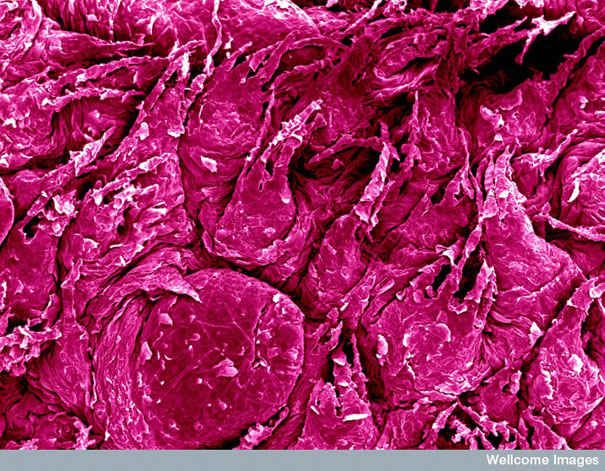
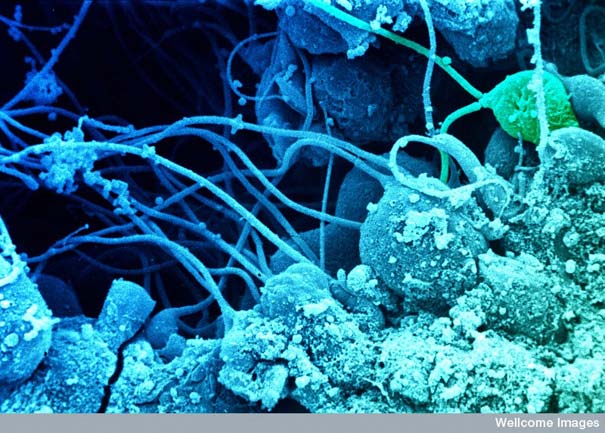

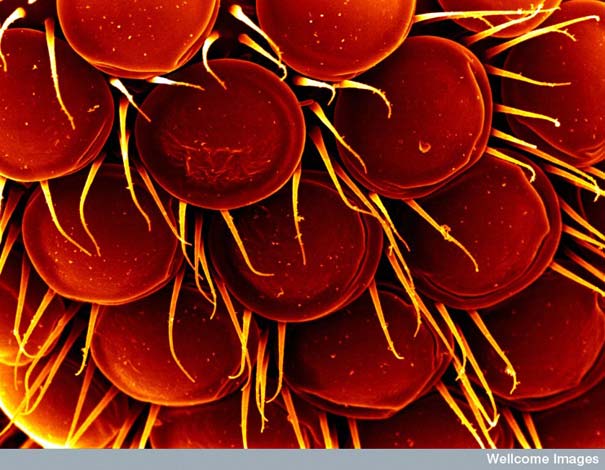
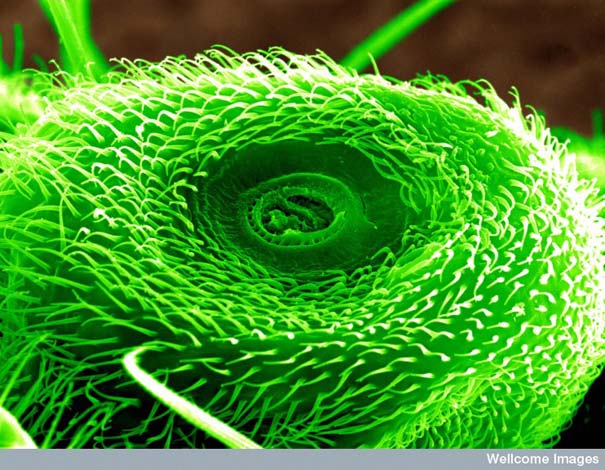
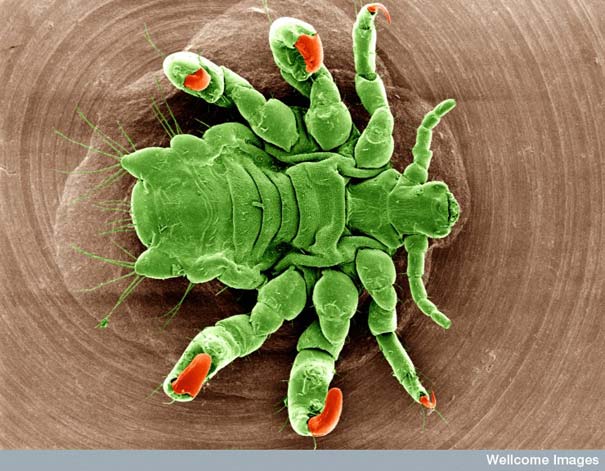
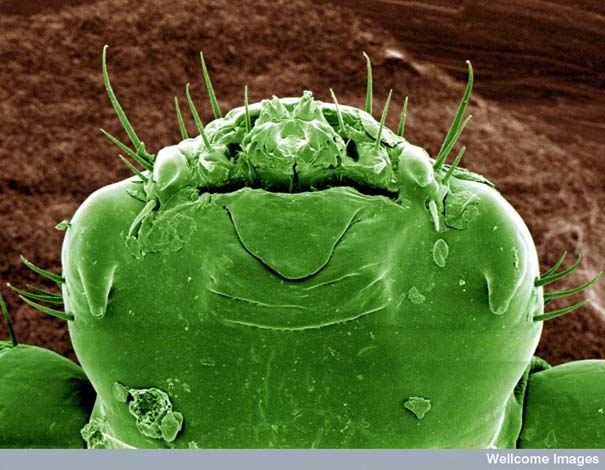
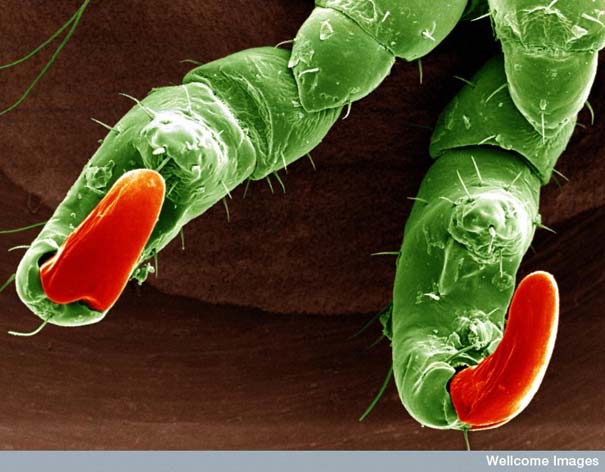
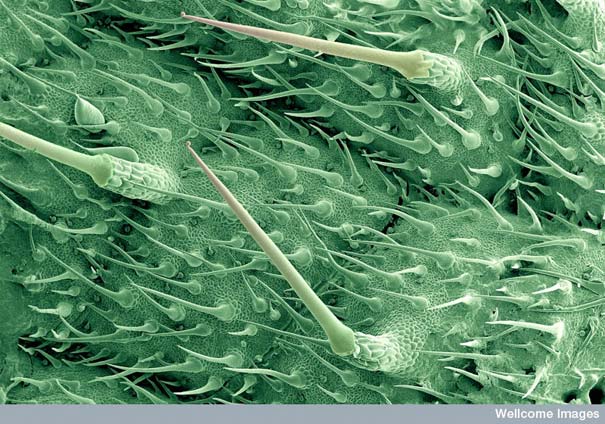
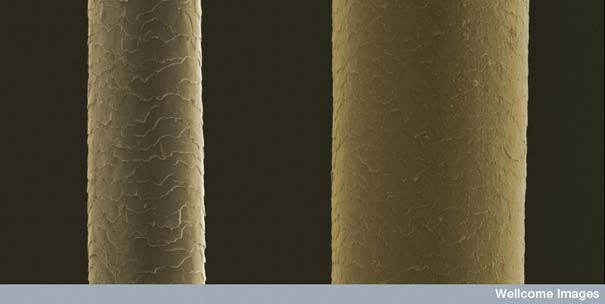

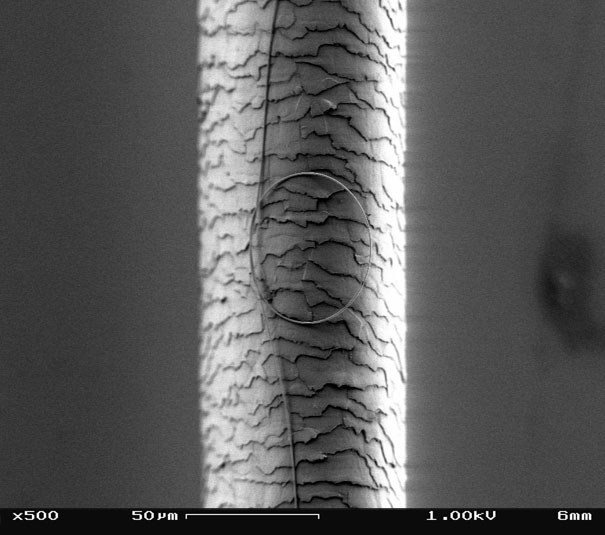
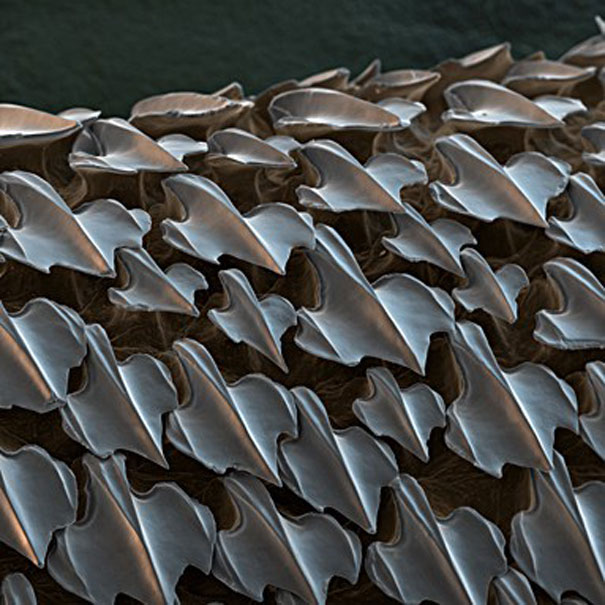




No comments:
Post a Comment